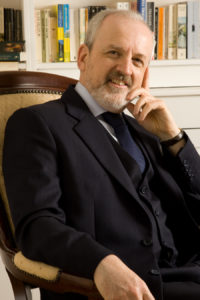 You will often read or hear influential magicians stress the importance of being original in your performances. The implication which you might draw from this is that if you haven’t infused your magic with unique elements, you have somehow failed or will never be considered a good entertainer.
You will often read or hear influential magicians stress the importance of being original in your performances. The implication which you might draw from this is that if you haven’t infused your magic with unique elements, you have somehow failed or will never be considered a good entertainer.
However, being creative is not, in my view, the sole benchmark by which a magician should be judged, especially when a performer is primarily concerned with entertaining the lay public. Audiences can be just as well amused and impressed by a good performance of standard tricks, because they probably don’t realise, or indeed care, that in the magic world the material is considered hackneyed.
But I do suspect that there are those in magic who feel a bit intimidated by the perceived need to superimpose some elements of originality on what they do, and worry about how to come up with effects which are new.
Well, the first thing to say is that being creative or original doesn’t have to mean inventing a whole range of totally unique, fresh magic. Extremely few ‘new’ ideas do not have their roots in what has come before, as most are variations or improvements on established or old ideas.
So one way to achieve some personalisation of your tricks is to look at your current repertoire and consider whether there are any changes in the method, presentation or even in the actual props that are used, that could enhance or improve the effects. Sometimes a small tweak or addition can have a positive impact on how original the trick feels, even though the core of it has remained the same.
Another way to be creative is to simply take time to play around with some of your props. Sometimes this can lead you to realise that apparatus you normally use in one way can also be turned to create a totally different effect.
Or then again, see if you can take one or two moves out of a trick’s method. Close up magic, and cards in particular, is full of routines that are cluttered with unnecessary moves, and if you can streamline the method without reducing the trick’s impact, you will not only make it easier to perform, but probably simpler for your audiences to follow and understand.
My personal favourite way to come up with something a bit different is to imagine a plot and then use my knowledge of magic principles to put together a strong method. I often find that during this process my original idea of what the effect should be will change, and I will usually follow the trick to wherever it feels right to go in order to see whether something good comes from the journey. As a consequence, some of my best ideas started out as investigations into quite different initial plots.
Exactly how you become creative will depend on your magic knowledge. If you don’t have an extensive list of moves to call upon, trying to replace or remove sleights in an effect might not be possible. Similarly trying to come up with a method to solve a magical plot might be a step too far. But if you study and perform magic for long enough, gradually the tools to be creative will come to you.
